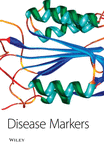Micro-RNA Expression in the Urinary Sediment of Patients with Chronic Kidney Diseases
Abstract
Background: Evidence indicates that microRNAs (miRNA) play a role in the pathogenesis of chronic kidney diseases (CKD). We explored the possibility of using urinary miRNA as non-invasive biomarkers for CKD.
Methods: We quantified miRNA expression in urinary sediment of 56 CKD patients who underwent kidney biopsy. Patients were followed for 16.2 ± 15.5 months.
Results: Patients with diabetic glomerulosclerosis had lower urinary miR-15 expression, while those with IgA nephropathy had higher urinary miR-17 expression, than other diagnosis groups. Baseline proteinuria had significant inverse correlation with urinary expression of miR-15, miR-192, and miR-216a; baseline renal function correlated with urinary expression of miR-15, miR-17, miR-192, and miR-217. The rate of renal function decline correlated with urinary expression of miR-21 (r = 0.301, p = 0.026) and miR-216a (r = 0.515, p < 0.0001). Patients with a high urinary expression of miR-21 and miR-216a had better dialysis-free survival than those with low expression (log rank test, p = 0.005 and p = 0.003, respectively).
Conclusions: Urinary miR-21 and miR-216a expression correlated with the rate of renal function decline and risk of progression to dialysis-dependent renal failure. Our results suggest that urinary miRNA profiling has the potential of further development as biomarkers of CKD.




